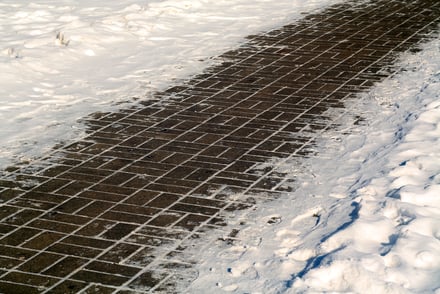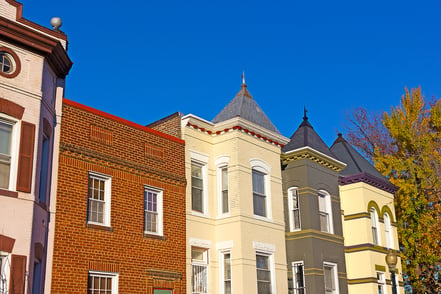As winter turns to spring and warmer temperatures draw us outdoors, you may spot a bulge in your exterior brick walls. This is masonry issue that are not uncommon among old brick buildings in historic neighborhoods such as those in Washington, DC and Old Town, Alexandria. Bulges indicate a problem with moisture that should be remedied promptly.
Why is My Brick Wall Bulging?
If you own an older brick home or building, it is a good idea to check for such irregularities in the walls every spring. Bulges in outdoor brick walls are caused by water seeping through the mortared joints. This moisture swells once it is trapped behind the wall, causing the bricks to bulge outward, away from the inner wall framework. This is similar to how potholes form in the road due to water intrusion. Trapped moisture can also cause any metal anchors to rust and loosen from the brick.
Winter moisture, coupled with repeated freezing and thawing, causes this phenomenon to happen through the winter months. As warmer temperatures appear in the spring, the forced evaporation through the mortared joints causes the bulges to become more prominent and noticeable.
This condition will only grow worse over time, especially if the bulging brick is allowed to sit through another wet winter season. As more water, snow and ice accumulate behind the wall, the brick and mortar will weaken more rapidly, causing greater deterioration and a possible collapse of your wall.
How Can I Prevent My Brick Walls from Bulging?
You should regularly inspect your exterior brick walls for cracks and deterioration of the mortar in the joints between bricks, especially in older brick buildings. A brick wall should be able to breathe, but without allowing water to penetrate through. Cracks, crevices and crumbling mortar allow water to get in and accumulate, where it weakens the brick wall components.
If allowed to go unrepaired, moisture trapped behind the brick wall freezes and thaws with changes in the seasons, further applying pressure on weakened bricks and mortar joints, and causing more cracks and bulging. Any time cracks or crumbling mortar is discovered in your old brick walls, you should contact a professional brick mason to repair the damage with historically correct tuckpointing. This is a process of replacing the old mortar with a new mix of material that is compatible with the age and hardness of your old home’s bricks. Tuckpointing, done correctly, will seal the joints between bricks allowing air to pass through.
What Should I Do About Bulging Brick Walls?
Portions of your brick wall that are bulging can be extremely dangerous. You have no way of knowing just how weak these portions of your wall have become over time. Never attempt to shore up bulging bricks or tear them out and replace them on your own. You should mark off a safety perimeter around bulging areas to prevent people from getting too close to the wall until you can call in an expert and arrange for repairs.
Renaissance Development LLC is your local Washington DC brick and masonry specialist that can provide a professional and experienced estimate concerning the repairs you will need for bulging brick walls. Get in touch to arrange an appointment for one of our tuckpointing specialists to inspect your bulging brick wall and provide a professional assessment.
Feb 6, 2020 3:43:25 PM


